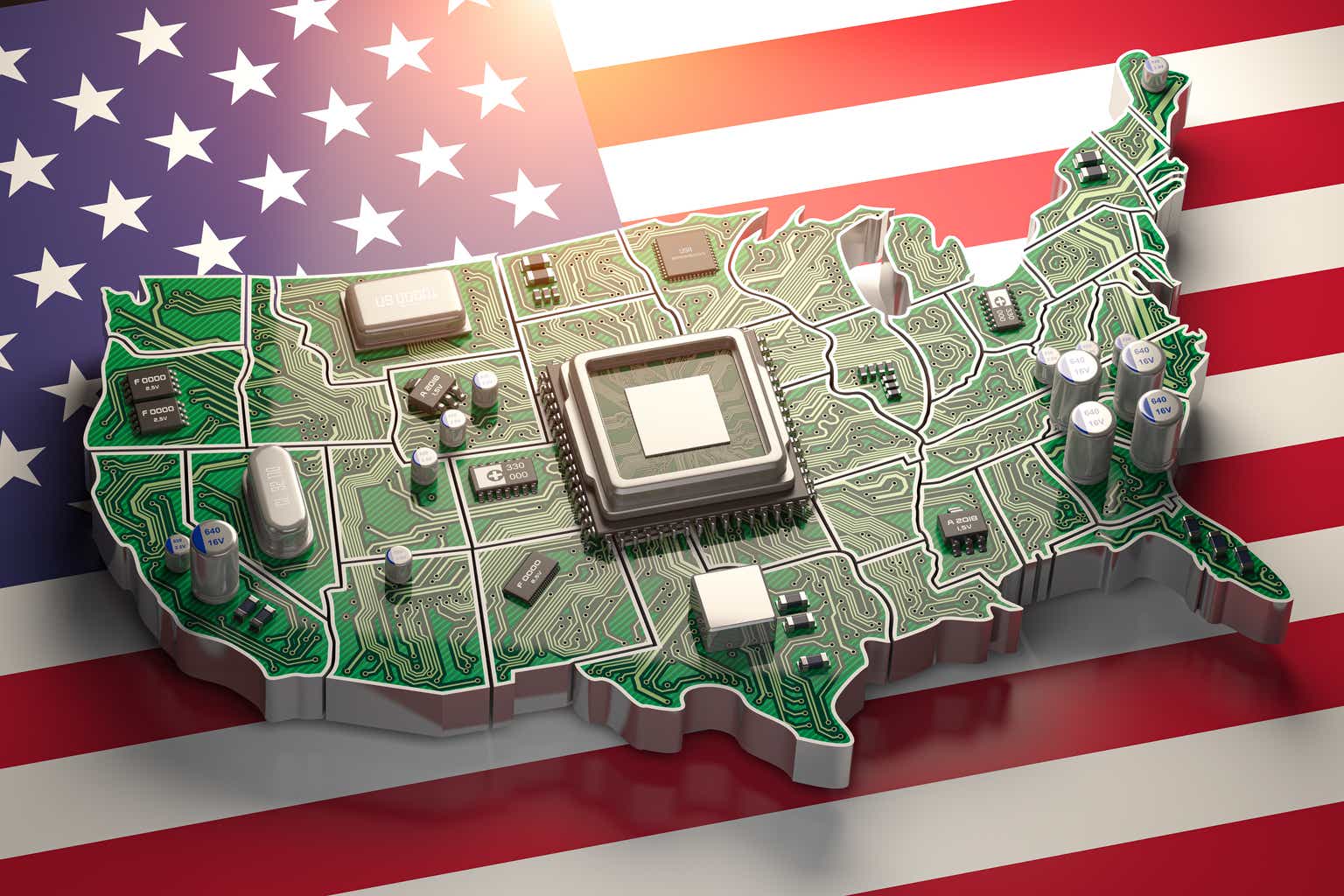Key Industry Trends and Innovative Technologies in 2025
Introduction The tech industry continues to evolve rapidly, with new tools and technologies emerging every year. As developers, it's crucial to stay updated on the latest trends and best practices to ensure we're building future-proof and efficient applications. In this post, I’ll explore some of the most significant trends, innovative technologies, and best practices shaping the development world in 2025. Key Industry Trends Artificial Intelligence (AI) and Machine Learning (ML) AI and ML are revolutionizing how we approach problem-solving in tech. From smart assistants to self-driving cars, these technologies are shaping a wide array of industries. Developers are integrating AI into applications to improve performance, automate processes, and personalize user experiences. Frameworks like TensorFlow and PyTorch make it easier to build sophisticated AI models. Why it matters: AI is increasingly becoming part of mainstream applications, and developers need to leverage its power to stay competitive. Edge Computing As more devices connect to the internet, processing data closer to the source is becoming essential. Edge computing allows for real-time data processing on devices, minimizing latency and improving performance. It's particularly useful for IoT devices, autonomous systems, and applications requiring low-latency responses. Why it matters: With the rapid growth of IoT, edge computing enables faster, more efficient data handling and reduces dependency on centralized cloud servers. WebAssembly (Wasm) WebAssembly is gaining traction as a way to run compiled code in the browser, offering near-native performance. This allows developers to write code in languages like Rust, C, and C++, and run it on the web, which was traditionally the domain of JavaScript. WebAssembly enhances performance and is becoming an essential tool for performance-critical web apps. Why it matters: As web applications grow more complex, WebAssembly is providing a way to achieve better performance without sacrificing portability. Innovative Technologies Quantum Computing While still in its early stages, quantum computing is an exciting area of innovation that promises to revolutionize fields like cryptography, materials science, and complex simulations. With companies like IBM and Google making advancements, it’s important for developers to stay informed about this technology and how it may affect industries in the future. Why it matters: Quantum computing will push the boundaries of what is possible in computing, making it important for developers to be prepared for future shifts. Blockchain and Decentralized Apps (dApps) Blockchain technology continues to grow, and developers are now looking at decentralized apps (dApps) as a way to build more secure, transparent applications. Blockchain provides a decentralized and immutable ledger, which can be used in various industries, including finance, supply chain, and healthcare. Why it matters: Blockchain is reshaping industries by offering secure, tamper-proof solutions that increase transparency and reduce the need for intermediaries. 5G Technology With the rollout of 5G networks, developers are gaining access to faster data speeds and lower latency. This enables the creation of more responsive applications, particularly for mobile apps, AR/VR, and IoT devices. 5G will also drive innovation in industries like telemedicine, autonomous vehicles, and smart cities. Why it matters: 5G is a game-changer for mobile and connected devices, opening up new opportunities for developers to build applications that rely on high-speed, low-latency networks. ** Best Practices for Developers** Embrace a Mobile-First Approach With the rise of mobile users worldwide, it's essential to prioritize mobile-first design. Ensuring your web applications are responsive and optimized for mobile devices will improve user experiences and increase engagement. Code Cleanliness and Maintainability Writing clean, modular, and well-documented code is a best practice that pays off in the long run. As applications grow, maintainability becomes a key factor. Tools like ESLint, Prettier, and Husky can help enforce coding standards and automate some of the process. Security Best Practices With the growing number of cyber-attacks, securing your applications is more important than ever. Adopting security best practices like OWASP Top 10, data encryption, and regular security audits will help keep your apps safe. Continuous Learning and Adaptation Technology is always evolving, so developers need to continuously learn and adapt. Stay updated by following industry blogs, attending conferences, and engaging with the developer community. Conclusion In 2025, staying ahead in the tech world means embracing the latest trends, diving into innovative technologies, and adhering to best practices. Whether it's leveraging AI for smarter applications, exploring new frontiers with blockchain, or improving perform

Introduction
The tech industry continues to evolve rapidly, with new tools and technologies emerging every year. As developers, it's crucial to stay updated on the latest trends and best practices to ensure we're building future-proof and efficient applications. In this post, I’ll explore some of the most significant trends, innovative technologies, and best practices shaping the development world in 2025.
Key Industry Trends
- Artificial Intelligence (AI) and Machine Learning (ML) AI and ML are revolutionizing how we approach problem-solving in tech. From smart assistants to self-driving cars, these technologies are shaping a wide array of industries. Developers are integrating AI into applications to improve performance, automate processes, and personalize user experiences. Frameworks like TensorFlow and PyTorch make it easier to build sophisticated AI models.
Why it matters: AI is increasingly becoming part of mainstream applications, and developers need to leverage its power to stay competitive.
- Edge Computing As more devices connect to the internet, processing data closer to the source is becoming essential. Edge computing allows for real-time data processing on devices, minimizing latency and improving performance. It's particularly useful for IoT devices, autonomous systems, and applications requiring low-latency responses.
Why it matters: With the rapid growth of IoT, edge computing enables faster, more efficient data handling and reduces dependency on centralized cloud servers.
- WebAssembly (Wasm) WebAssembly is gaining traction as a way to run compiled code in the browser, offering near-native performance. This allows developers to write code in languages like Rust, C, and C++, and run it on the web, which was traditionally the domain of JavaScript. WebAssembly enhances performance and is becoming an essential tool for performance-critical web apps.
Why it matters: As web applications grow more complex, WebAssembly is providing a way to achieve better performance without sacrificing portability.
Innovative Technologies
- Quantum Computing While still in its early stages, quantum computing is an exciting area of innovation that promises to revolutionize fields like cryptography, materials science, and complex simulations. With companies like IBM and Google making advancements, it’s important for developers to stay informed about this technology and how it may affect industries in the future.
Why it matters: Quantum computing will push the boundaries of what is possible in computing, making it important for developers to be prepared for future shifts.
- Blockchain and Decentralized Apps (dApps) Blockchain technology continues to grow, and developers are now looking at decentralized apps (dApps) as a way to build more secure, transparent applications. Blockchain provides a decentralized and immutable ledger, which can be used in various industries, including finance, supply chain, and healthcare.
Why it matters: Blockchain is reshaping industries by offering secure, tamper-proof solutions that increase transparency and reduce the need for intermediaries.
- 5G Technology With the rollout of 5G networks, developers are gaining access to faster data speeds and lower latency. This enables the creation of more responsive applications, particularly for mobile apps, AR/VR, and IoT devices. 5G will also drive innovation in industries like telemedicine, autonomous vehicles, and smart cities.
Why it matters: 5G is a game-changer for mobile and connected devices, opening up new opportunities for developers to build applications that rely on high-speed, low-latency networks.
** Best Practices for Developers**
Embrace a Mobile-First Approach
With the rise of mobile users worldwide, it's essential to prioritize mobile-first design. Ensuring your web applications are responsive and optimized for mobile devices will improve user experiences and increase engagement.Code Cleanliness and Maintainability
Writing clean, modular, and well-documented code is a best practice that pays off in the long run. As applications grow, maintainability becomes a key factor. Tools like ESLint, Prettier, and Husky can help enforce coding standards and automate some of the process.Security Best Practices
With the growing number of cyber-attacks, securing your applications is more important than ever. Adopting security best practices like OWASP Top 10, data encryption, and regular security audits will help keep your apps safe.Continuous Learning and Adaptation
Technology is always evolving, so developers need to continuously learn and adapt. Stay updated by following industry blogs, attending conferences, and engaging with the developer community.
Conclusion
In 2025, staying ahead in the tech world means embracing the latest trends, diving into innovative technologies, and adhering to best practices. Whether it's leveraging AI for smarter applications, exploring new frontiers with blockchain, or improving performance with WebAssembly, developers need to stay agile and informed. By adopting these trends and best practices, we can create better products, improve our skills, and contribute to the ever-evolving tech community.













































![[Dead] Japan Airlines First Class wide open through JetBlue TrueBlue (though it’s expensive)](https://frequentmiler.com/wp-content/uploads/2024/11/JAL-first-seat.jpg?#)




























